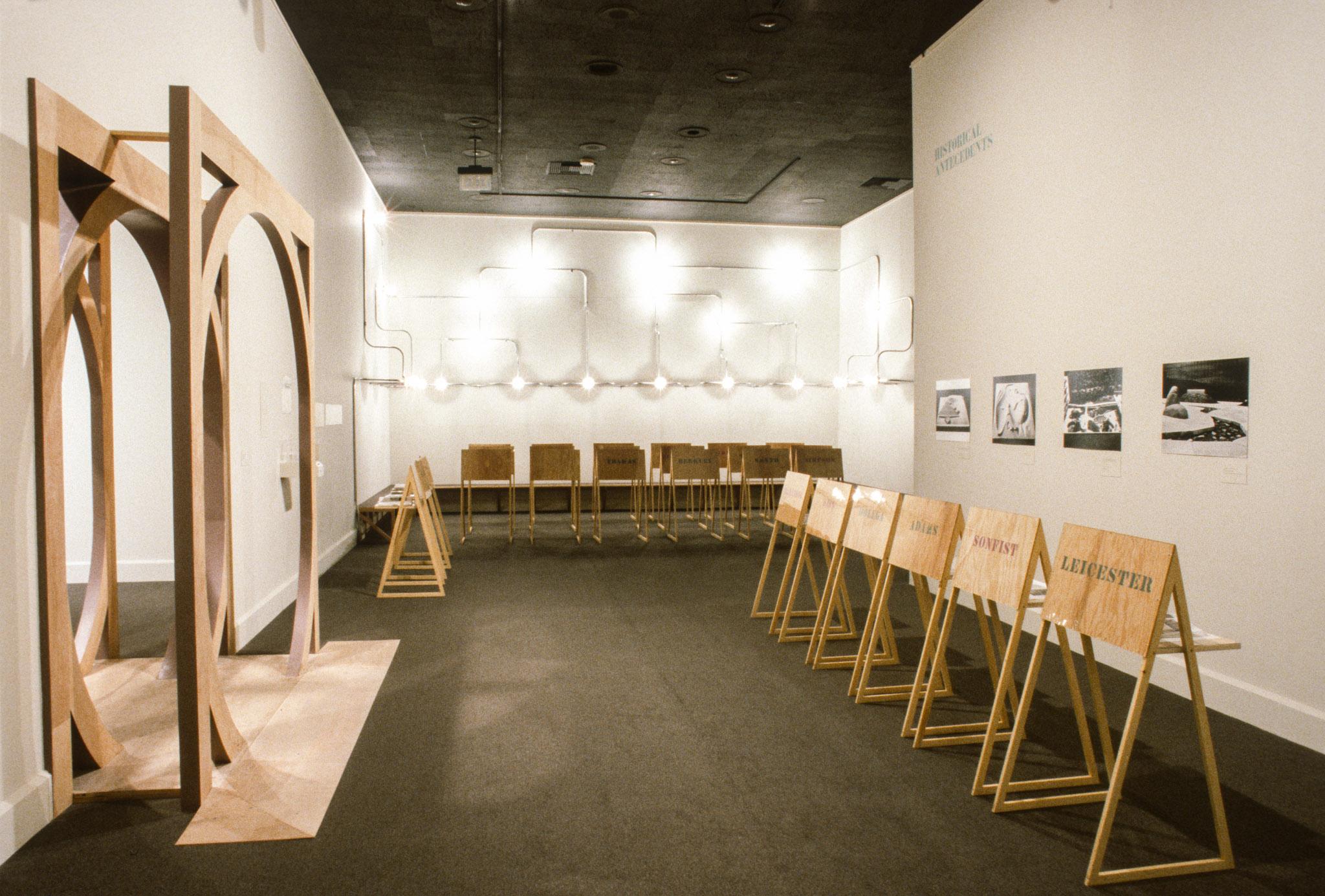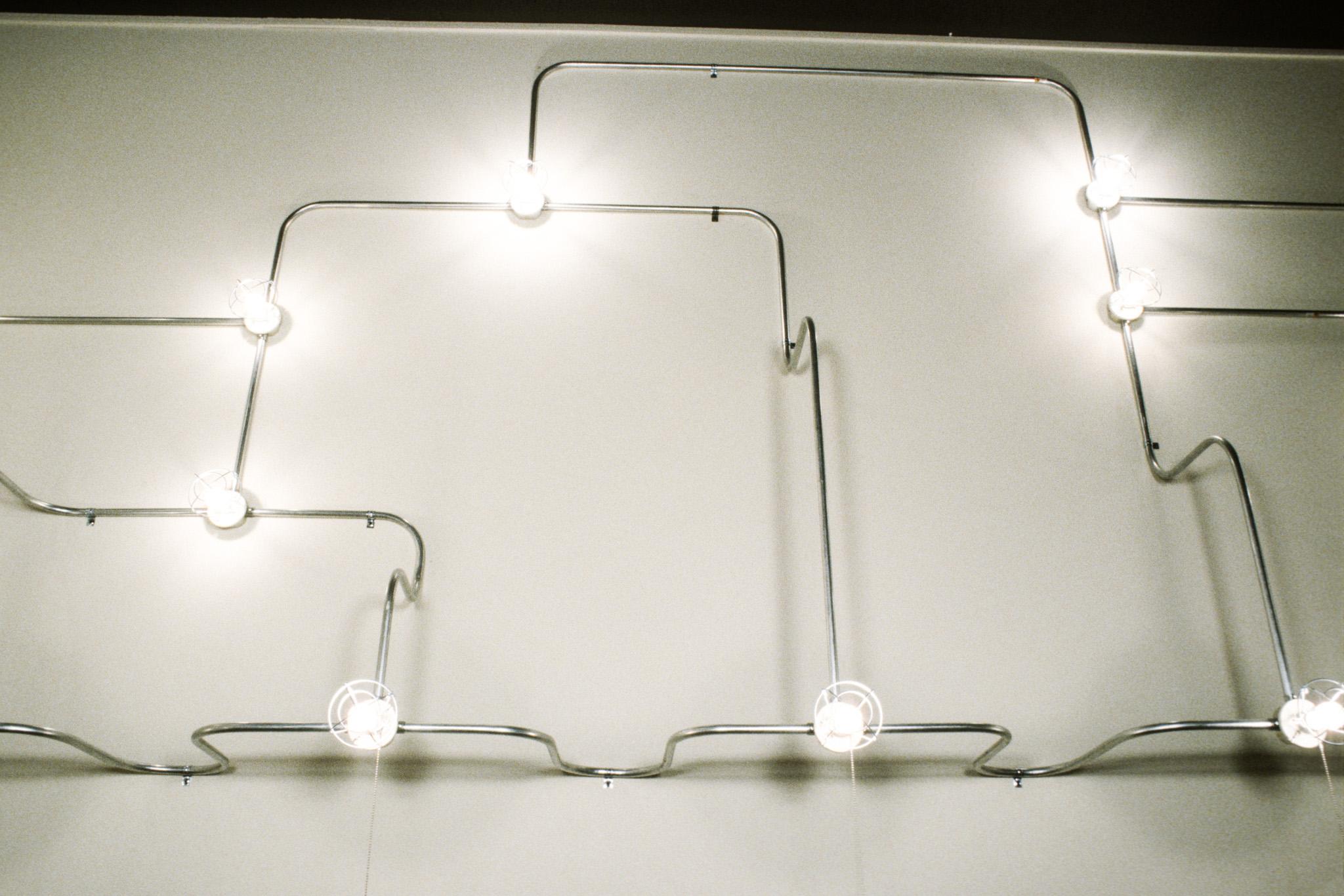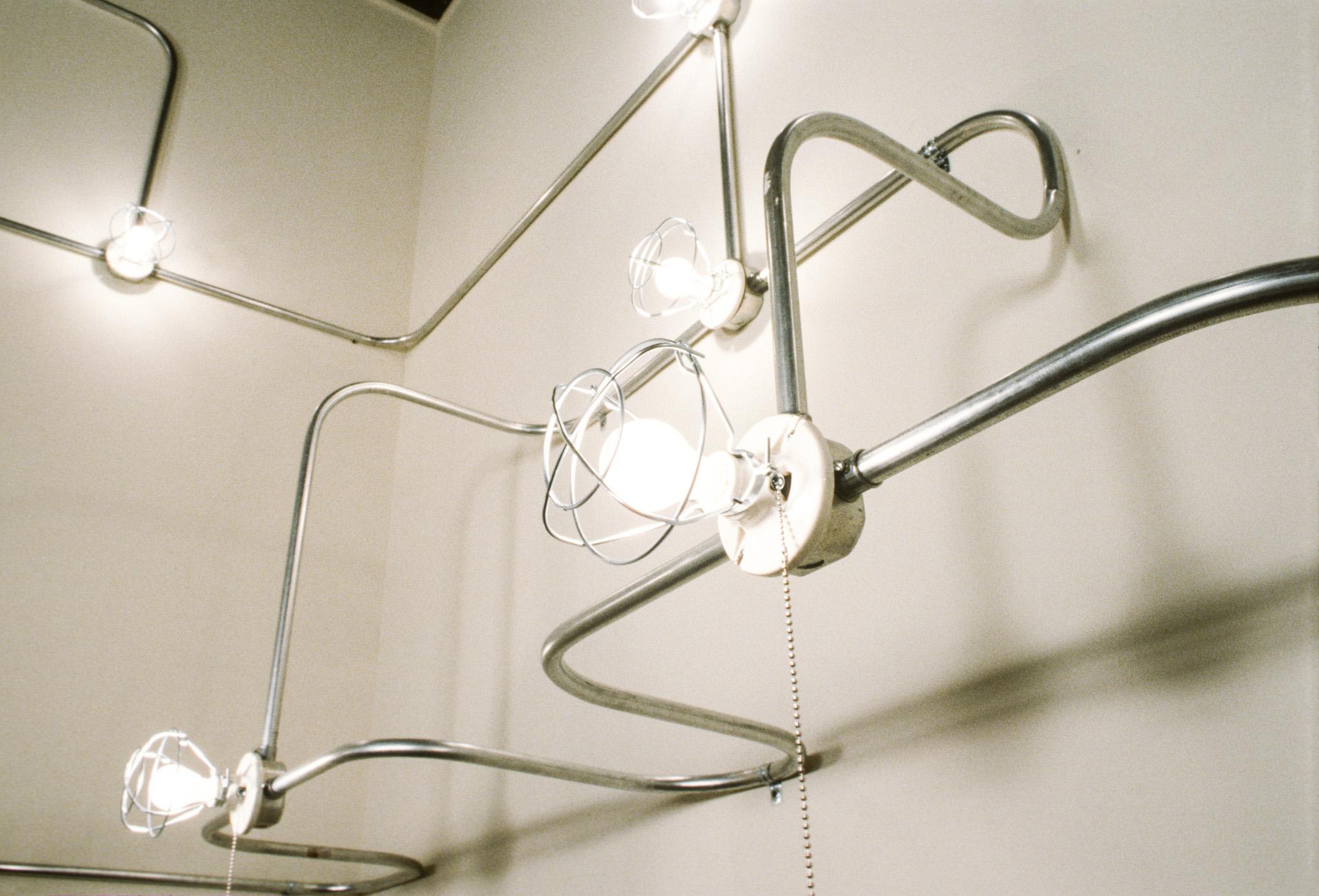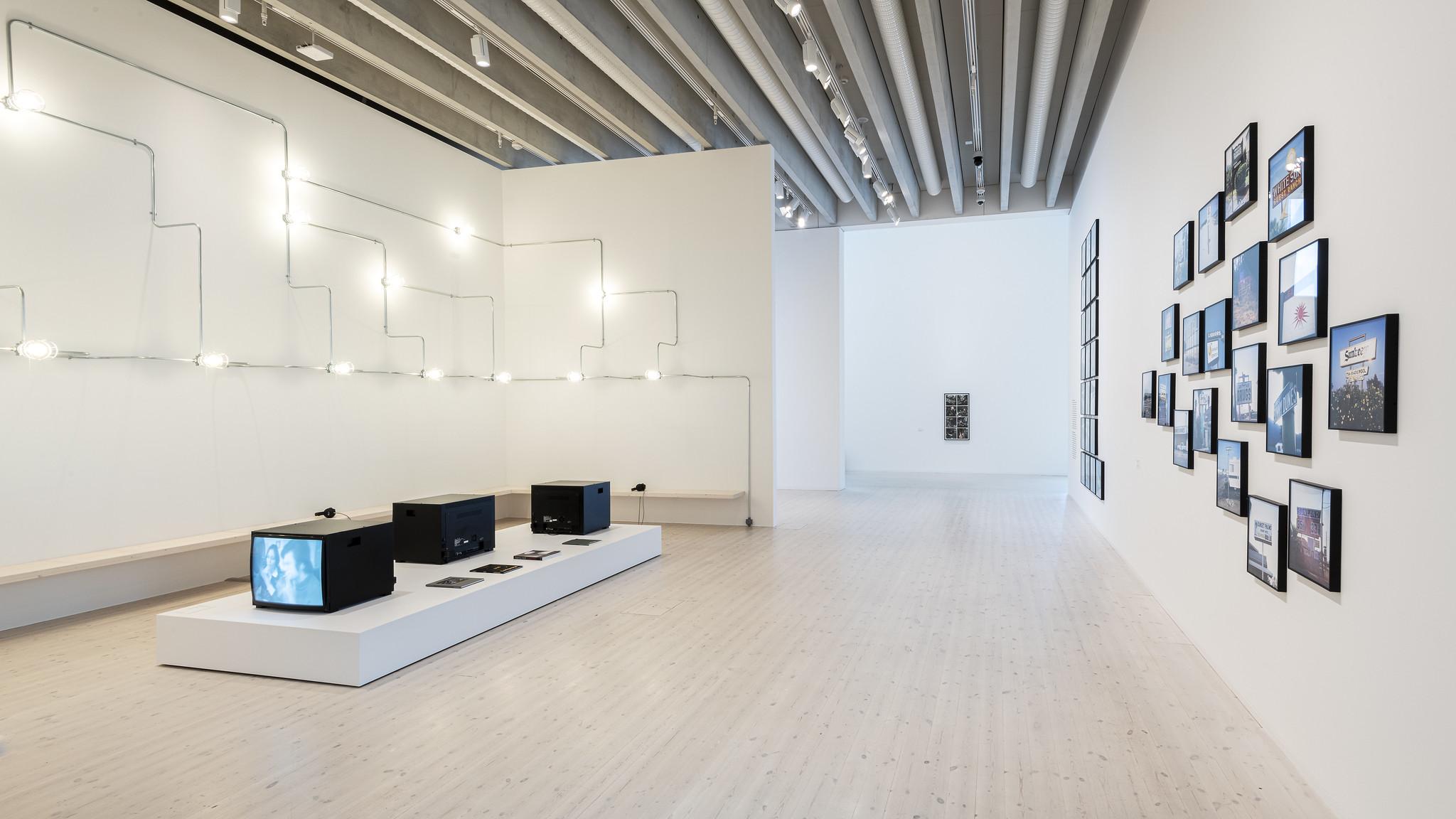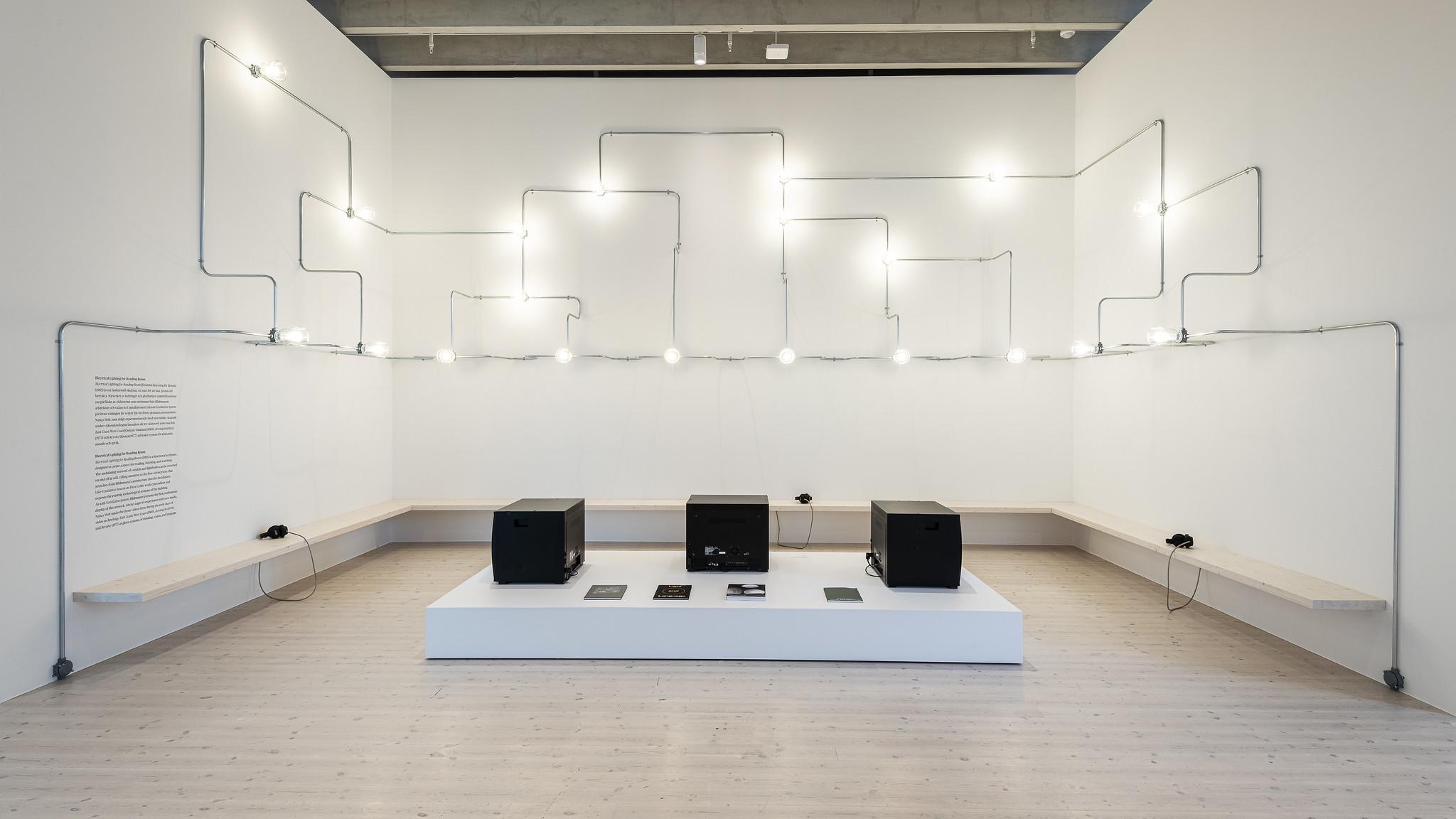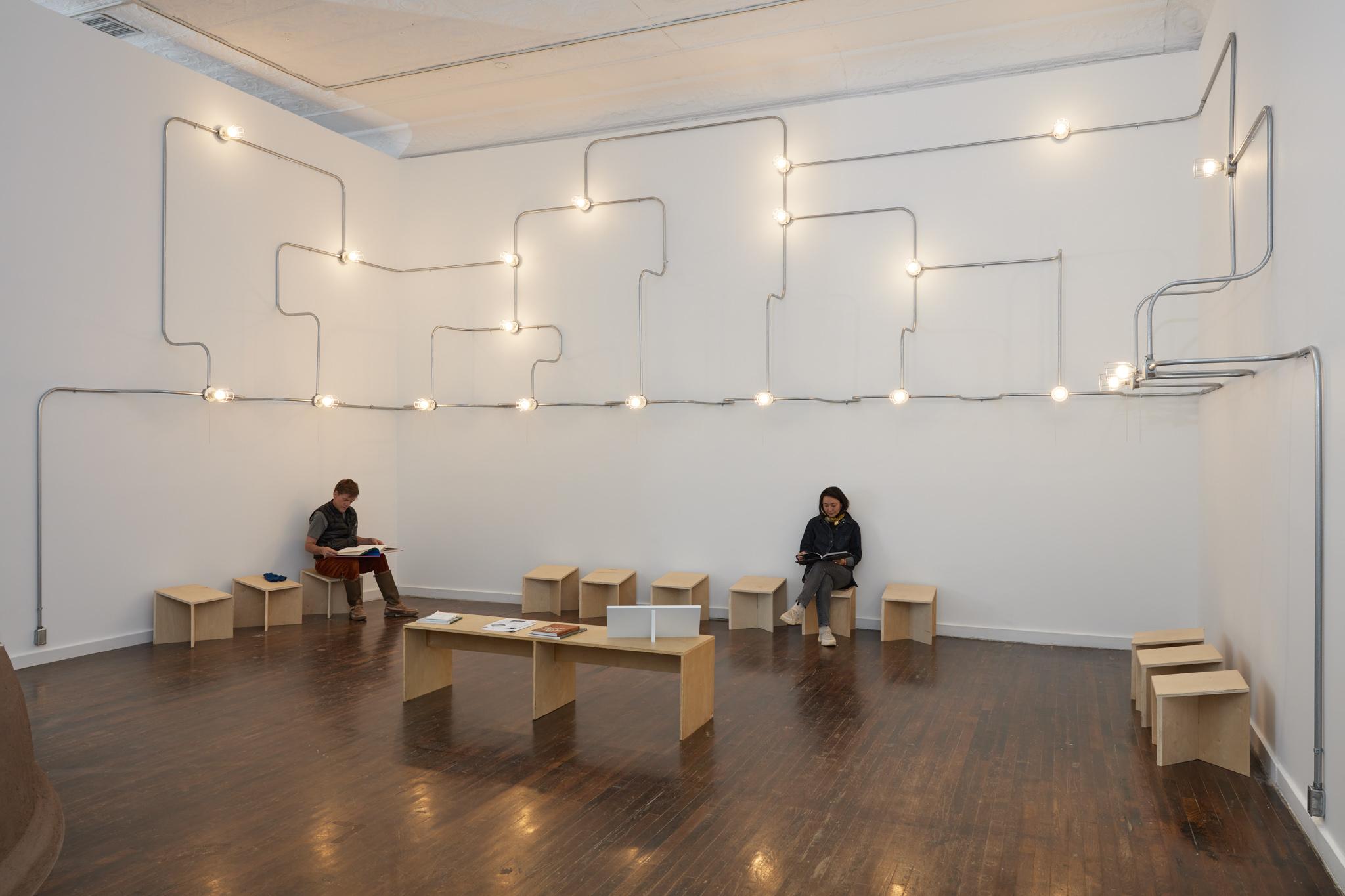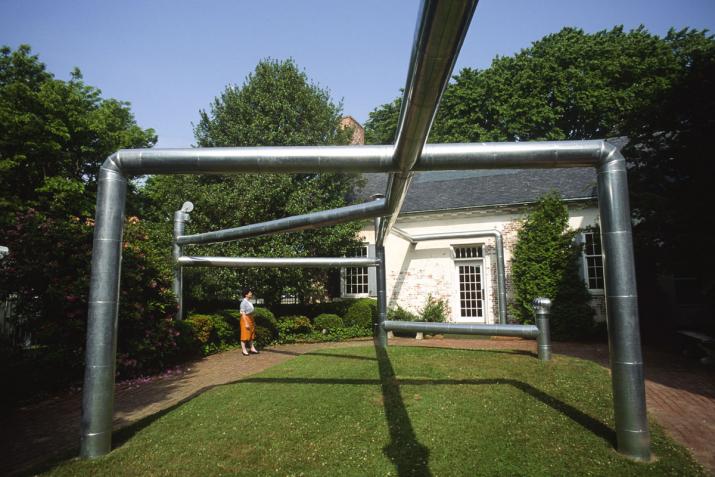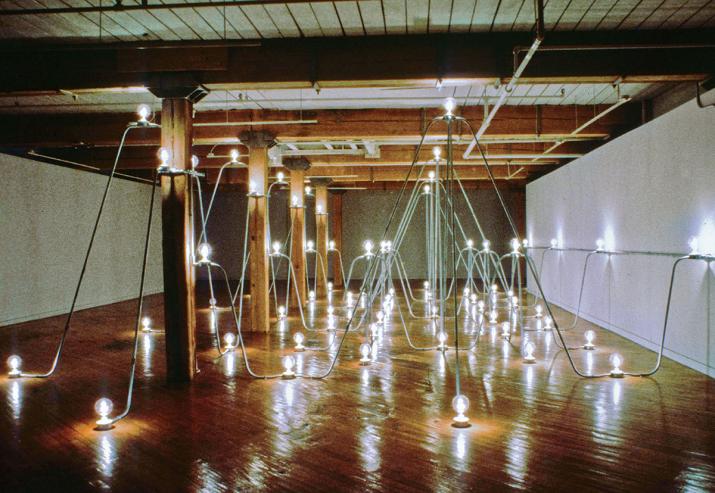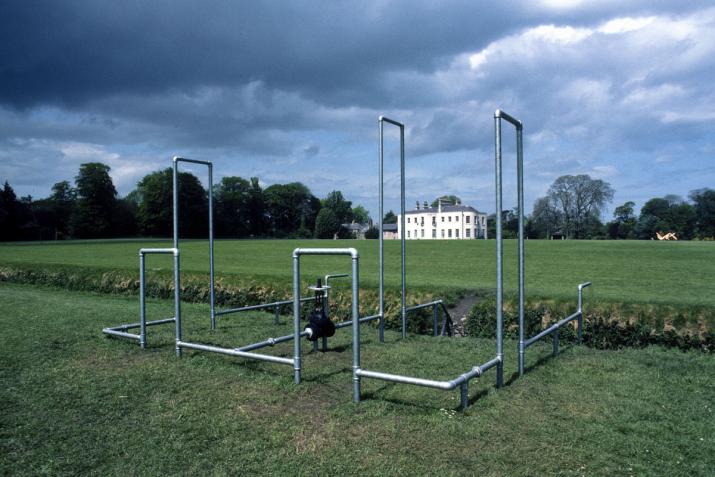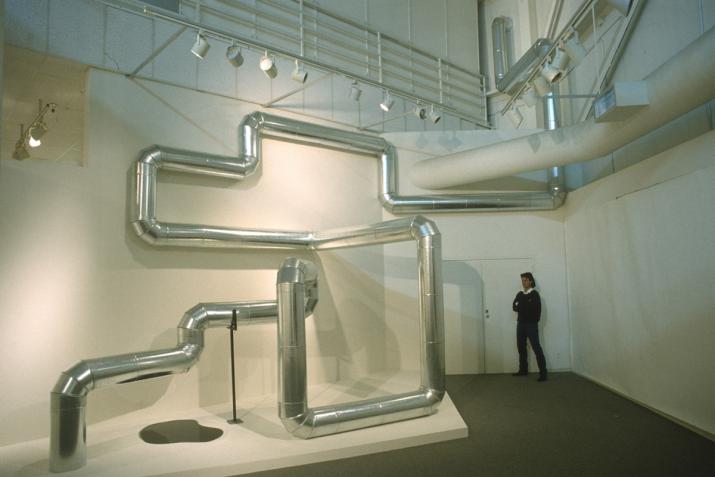
“We live in a world of steel mandalas” — Nancy Holt’s "Electrical Lighting for Reading Room"
A defined interior space with white walls contains an arched network of steel pipes that undulates along three walls of the room. Each connection point of the protruding network is marked by twenty standard white ceramic sockets that holds a lightbulb, protected by a metal cage. From the bottom row of ten lightbulbs dangle chains, which can be pulled to turn them on and off. Below the grid is a continuous low bench for sitting.

